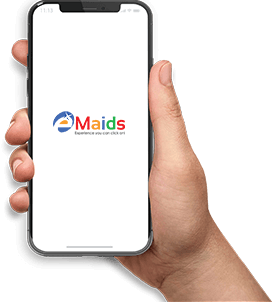When it comes to handling raw meat, there are important considerations to take into account to ensure food safety and prevent cross-contamination in your kitchen. One common question that often arises is whether or not it is necessary to wash raw chicken before cooking it. The experts at eMaids are here to provide you with tips you need to keep your kitchen clean.
Should You Wash Your Raw Chicken?
According to USDA research, washing or rinsing meat or poultry actually increases the risk of cross-contamination in the kitchen, which can lead to foodborne illnesses1. The process of washing can cause bacteria to be splashed onto various surfaces in your kitchen, increasing the chances of harmful bacteria spreading.
Experts strongly advise against washing or rinsing raw meat and poultry to minimize the risk of cross-contamination. Not only does it not effectively reduce the risks of bacteria such as salmonella or campylobacter, but it can actually increase the likelihood of food poisoning and the transfer of pathogens.
To truly maintain a clean and safe kitchen environment after handling raw meat, it is crucial to focus on proper disinfection. Here are some steps you can take to effectively disinfect and minimize the risks of cross-contamination:
Separate and contain
Make sure to keep raw meat and poultry separate from other foods in your kitchen. Use separate cutting boards, utensils, and containers to prevent any potential contact between raw meat and ready-to-eat foods.
Clean surfaces
After preparing raw meat, thoroughly clean all surfaces that came into contact with it. Use hot soapy water and a scrub brush to remove any residue or bacteria. Pay close attention to cutting boards, countertops, knives, and any other tools used during the preparation process.
Disinfect with a solution
After cleaning, it is important to disinfect surfaces to eliminate any remaining bacteria. You can use a solution of one tablespoon of bleach mixed with one gallon of water. Apply this solution to the surfaces and let it sit for a few minutes before rinsing with clean water.
Hand hygiene
Proper handwashing is crucial before and after handling raw meat. Wash your hands thoroughly with warm water and soap for at least 20 seconds to remove any bacteria. Use hand sanitizer as an extra precaution if soap and water are not readily available.
Prevent cross-contamination
Be mindful of potential sources of cross-contamination throughout the cooking process. Avoid using the same utensils or cutting boards for both raw and cooked foods, and wash your hands and surfaces frequently to prevent the spread of bacteria.
Cook to the proper temperature
Cooking meat and poultry to the correct internal temperature is essential for killing harmful bacteria. Use a food thermometer to ensure that meat reaches the recommended temperature, which varies depending on the type of meat being cooked.
Store safely
Properly storing raw meat in the refrigerator or freezer is essential for preventing the growth of bacteria. Keep raw meat wrapped securely and stored on the bottom shelf of the refrigerator to prevent any drips or spills from contaminating other foods.
By following these guidelines and focusing on proper disinfection practices, you can minimize the risk of foodborne illness and create a safe and hygienic kitchen environment. Remember that when it comes to handling raw meat, caution and attention to detail are key to keeping you and your family safe from foodborne pathogens.
Proper disinfecting techniques after meat preparation:
Disinfecting surfaces after the preparation of raw meat is a crucial step in maintaining a clean and safe kitchen environment. Even after thorough cleaning, there may still be lingering bacteria on surfaces that came into contact with the raw meat. Here's how to effectively disinfect your kitchen after handling raw meat:
- Use a disinfectant solution: After cleaning surfaces with hot soapy water, follow up with a disinfectant solution to kill any remaining bacteria. You can use a commercially available kitchen disinfectant or create your own by mixing one tablespoon of bleach with one gallon of water. Apply the solution to surfaces using a clean cloth or spray bottle, ensuring thorough coverage.
- Let it sit: Allow the disinfectant solution to sit on surfaces for a few minutes to effectively kill bacteria. This contact time is essential for the disinfectant to work properly. Refer to the instructions on the product label for specific guidance on contact time.
- Rinse with clean water: After the appropriate contact time has elapsed, rinse the surfaces thoroughly with clean water to remove any residual disinfectant. This step helps to prevent any potential chemical residue from coming into contact with food or utensils.
- Air dry or use clean towels: Allow the disinfected surfaces to air dry completely, or use clean towels to dry them thoroughly. Avoid using the same towels that were used during the preparation of raw meat to prevent cross-contamination.
- Repeat as necessary: Depending on the severity of contamination and the frequency of raw meat preparation in your kitchen, you may need to disinfect surfaces more frequently. Be vigilant and disinfect surfaces regularly to maintain a hygienic kitchen environment.
Conclusion
By incorporating thorough disinfection practices into your kitchen cleaning routine, you can effectively minimize the risk of cross-contamination and ensure the safety of your food preparation area. Remember that proper disinfection is an essential step in preventing foodborne illness and keeping your kitchen clean and sanitary. Schedule regular cleanings with eMaids to ensure your kitchen gets a deep cleaning.


